Red Yucca
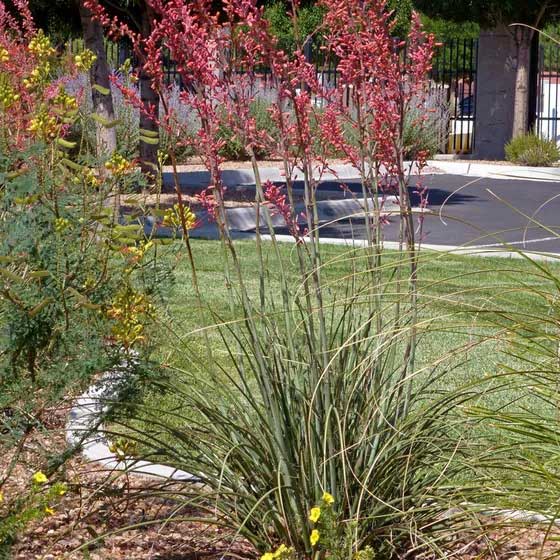
Botanical Name: Hesperaloe parviflora
Category: sub-shrub
Divisible: Yes
Common Name: Red Yucca
Evergreen: Yes
Propagation: Seed, division
Family:Asparagaceae (Century plant)
Invasive: No
Size: 24-36″ tall x 36″ wide
Not truly a yucca, Red yucca is sun loving and a tough, drought-tolerant plant. It’s narrow evergreen leaves have a fringe of white threadlike hairs along their edges and form a stiff arching habit with dramatic ascending spikes of colorful flowers in spring.
Red Yucca thrives in nearly any well-drained soil, but sandy soil is best. Young plants may be small, but they will spread relatively quickly. Water regularly for the first year but not to the point of sogginess. Thereafter, water occasionally especially during periods of hot, dry weather but be careful not to overwater.
Flower stalks will produce fruit after blooming. Seed can be gathered from the pods for propagation or left for your birds’ winter food. Remove stalks in the spring.
You can also remove older leaves which will eventually die down and turn brown. When they are ready – just pull them from the base of the plant. Red yucca plants really don’t require fertilizer, but you can feed them lightly before new growth appears in spring. Use a good-quality, general-purpose fertilizer.
It is a clumping plant that grows and divides into numerous plants under ideal conditions. These offshoots can be dug up and replanted. You can also divide established clumps.

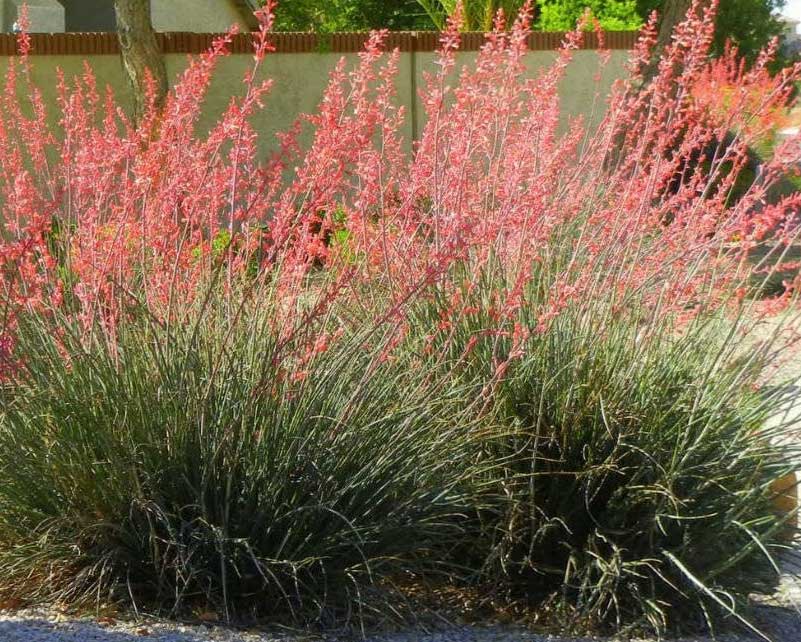
My Experience:
Another five star perennial for the high desert garden Red Yucca is so easy to grow and requires little care. In the spring when it’s coral blooms are waving in the breeze it’s a show stopper. The rest of the year it’s spiky foliage adds texture and interest to any garden bed.
These do not like a lot of water and I loved them when they were within beds of perennials but most did not do well with regular irrigation. I have moved them all to those beds that are watered by hand and infrequently and they are happier.
As they have grown I have begun dividing clumps turning divisions and “babies” into new plants.
Growing Red Yucca from Seed:
The germination rate of Red Yucca is variable so always start more seeds than you think you need. Seeds are viable for 5 years from harvest. Indoor starting can be done at any time of year and is the best method for successful germination.
Indoor Start:
- Soak seeds in water for 24 hours. Scarification is not necessary.
- Sow the seeds in trays or pots filled with a gritty mix – soil and sand or cactus mix. Lightly cover with soil mix.
- Keep soil moist and temperatures at 60-70°. Average germination time is 3-4 weeks.
- Give seeds bright indirect light.
- Important: When seedlings are large enough to handle – about 8 weeks -transplant into pots that are at least 4 inches deep. Well drained sandy soil can be used. Allow surface of soil to dry out in between watering.
- As the plants grow repot into 1 gallon pots. Red Yucca develops a long tap root that needs lots of space to develop. After the first year water only when soil is completely dry.
Care and Maintenance:
- Some recommend keeping Red Yucca in pots for the first year or more.
- Once they are ready – plant in dry well draining sandy soil in full sun. Dig a deep enough hole to allow for the long tap root.
- A general purpose fertilizer can be applied – feed lightly in the spring when there are signs of new growth.
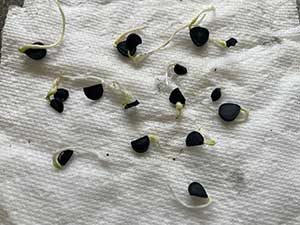
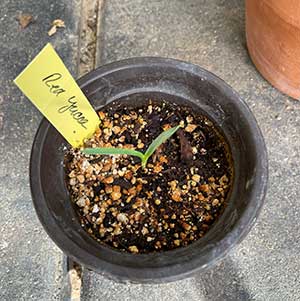
Dividing Red Yucca:
Red Yucca is one of the easier plants to divide as their roots are not too deep and are contained in a small circumference.
Insert your spade at the outer edge of the base of the plant and work your way around it gently loosening and lifting the plant until it is free.
Hose off as much soil around the roots as you can. Hopefully you will then see where the clumps are.
I have 2 methods for separating it into smaller clumps.
1. Wiggle method: Working from the outside of the plant reach your fingers around the clump at the bottom where the roots are and gently wiggle it apart. If your soil is loose this method works the best with least damage to the plant.
2. If necessary use a sharp spade or knife (a drywall knife is perfect for this) to cut out the clumps. Make sure you get some of the root with your clump.
If you end up with a clump that does not have roots – let it callus over for a few days and then plant.
Loosen the soil where you intend to plant your clump. Add some water and the clump. Back fill being careful to not mound the soil around the base.
Red Yucca does not like wood or organic mulch as they hold too much moisture and will rot the plant at the base. If you use any mulch use small stones.
I often stake them – especially the taller plants – for a month or so until they start to take and can support their weight.
Buy Red Yucca seeds from my Etsy shop

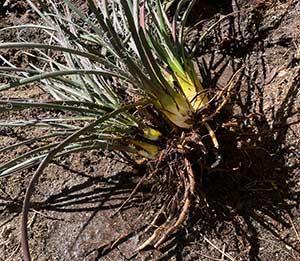
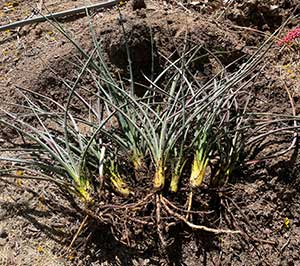
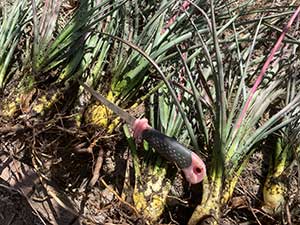
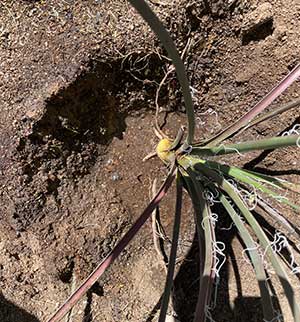
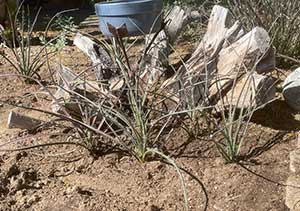

0 Comments